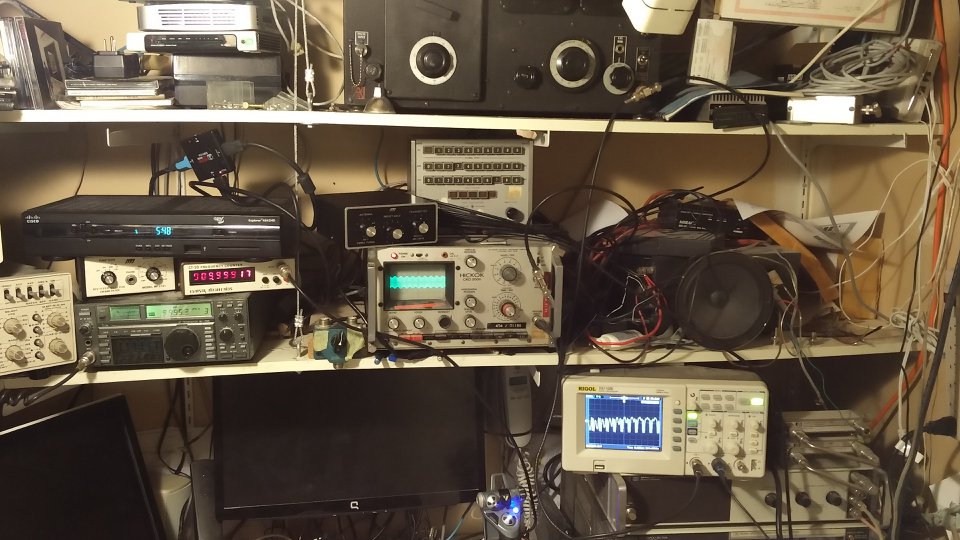This is a short demo I've done for people wondering why I have an ancient analog scope from 1974.
The big black box on the top shelf (partly cut off) is an RF signal generator from roughly the Jurassic era. It's generating a 10MHz signal with 400Hz AM modulation at around 25%. The output goes to two scopes and a counter.
The ancient Hickok CRO5000 scope (20MHz bandwidth) in the middle is happily showing the envelope (2ms/div, 50mV/div). You'll have to click on the picture to really see it.
The snazzy 100MHz digital scope below and to the right has exactly the same settings. So why is it showing garbage instead of the nice classic AM envelope that the analog scope does?
The problem is that it is sampling at 10Ms/sec, so it's picket fencing against the input signal. This is an endemic problem when you try to look at a low frequency signal overlaid on a high frequency envelope. If you're aware of the problem, about the best you can do is put in on peak detect.
But wait, there's more: the analog scope is sweeping at thousands of times per second, while the digital scope is doing just a few refreshes per second. You can't tell from the still picture, but on the analog scope you can actually see the waveform wobbling around indicating that something is not clean with the signal. Can't do that on the digital scope even if the aliasing problem wasn't there.
Which brings me to the IC735 HF radio on the left of the Hickok analog scope. Just tune to the 10MHz in AM mode and you can clearly hear that the signal has a 120Hz buzz, and in FM mode you can hear it FM'ing a bit as well. Can't do that with either scope! The HF radio lets you use your ears as a narrow-band frequency analyzer.
So the moral of the story is, there's a good tool for every job, even analog scopes, and occasionally an HF radio is a great tool too.
Click on pic for large version
